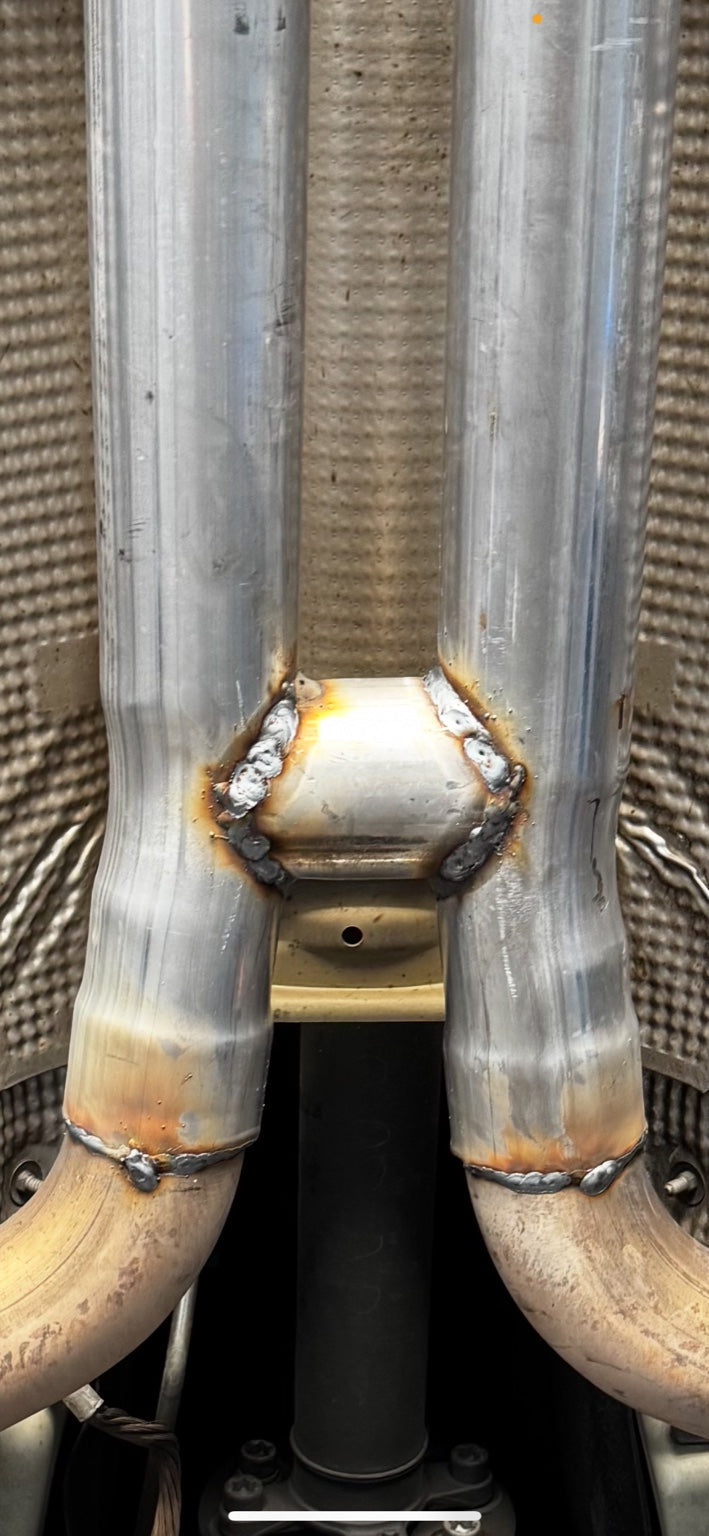
X-Pipe vs H-Pipe for Mercedes: Performance, Sound, Scavenging & Placement
X-Pipe vs H-Pipe: The Right Choice, The Right Placement
Picking between an X-pipe and an H-pipe isn’t just about noise. It changes exhaust scavenging, torque delivery, efficiency, and how the car feels in the real world. Bottom line: it’s about balance—and crossover placement matters more than most people think.
Quick Compare
| Feature | X-Pipe | H-Pipe |
|---|---|---|
| Power Bias | Mid-to-high RPM, stronger top-end | Low-to-mid RPM, stronger torque |
| Scavenging | Efficient pulse merge as flow rises | Pressure balance, milder pulse sharing |
| Exhaust Note | Smoother, higher-pitched, “exotic” | Deeper, throatier, classic V tone |
| Best Use | Highway pulls, track, higher redline | Street, hills, daily drivability |
| Placement Sensitivity | High — closer to engine = better | High — closer to engine = better |
Rule of thumb: The closer the crossover is to the engine, the stronger the scavenging effect.
Sound Characteristics (What You’ll Actually Hear)
- X-Pipe: Smooth and higher-pitched with a refined, “European/exotic” rasp as RPM climbs. Minimal thump, more zing.
- H-Pipe: Deeper, heavier rumble with more low-frequency content. Think classic muscle—presence at part-throttle.
How Exhaust Scavenging Actually Works
Cylinders fire in sequence, sending pressure waves down the pipes. Each high-pressure pulse is followed by a low-pressure “tail” that can help pull the next pulse out of its cylinder. A well-placed crossover lets one bank’s pulse assist the other at the right time. That’s scavenging—free efficiency and response when the system is designed as a whole.
- Velocity matters: Oversized tubing slows gas speed and weakens scavenging; undersized chokes the top end. Choose diameter for your power target.
- Length & timing: Crossovers closer to the collectors “see” hotter, faster pulses—stronger interaction and cleaner pressure balance.
- System behavior: Headers, cats/resonators, mufflers, and the tune all change pulse shape and timing. Design the system, not one piece.
Why OEMs Choose One Thing and Enthusiasts Choose Another
- OEM priorities: NVH (noise/vibration/harshness), cost, packaging, emissions, and consistency across climates. That often favors simpler crossovers and quieter tones.
- Performance priorities: Power under the curve, response, tone character, and thermal management. That favors smarter crossover placement, freer-flowing components, and proper tuning.
X-Pipe: Clean Merge, Higher-RPM Payoff
An X-pipe blends both banks into a smooth cross, increasing scavenging as flow rises. Result: freer top-end, cleaner pull above mid-range, and a more “European” note. Great for cars that live above 4k RPM or see track time.
- Pros: Better top-end, smoother curve, refined/raspier tone.
- Cons: If the rest of the system is oversized or mismatched, the lower band can feel hollow—that’s a balance problem, not the X-pipe itself.
- Reality check: An X-pipe alone does not inherently reduce low-end torque. Poor sizing or lazy placement does.
H-Pipe: Pressure Balance, Low-End Driveability
An H-pipe links banks with a straight cross tube. It balances pressure more than it blends pulses, which supports low-to-mid RPM torque and the classic V-engine rumble. On the street—hills, stop-and-go, part-throttle—this can feel night-and-day better.
- Pros: Stronger low-end feel, deeper note, calmer around town.
- Cons: Won’t merge pulses as effectively at very high flow; absolute peak HP may be a tick lower vs a well-executed X.
- Tip: Still place it forward. The nearer to the engine, the more meaningful the effect.
Placement Tips: Make the Crossover Do Real Work
- Go forward: Aim to locate the crossover as close to the collectors as packaging allows. Hotter, faster gas = stronger scavenging.
- Equalize where you can: Similar length from each collector to the crossover keeps timing predictable.
- Avoid sharp kinks: Gentle radius bends keep velocity up; avoid crushed sections and step changes.
- Mind the ancillaries: Transmission pan, driveshaft, heat shields—don’t compromise safety or serviceability.
- Seal it: Quality welds or proper band clamps only. Leaks kill pulse control.
Match the System: Diameter, Cats/Resonators, Mufflers, Tune
- Diameter: Pick for target HP and use case; don’t “go big” just to go big.
- Cats/Resonators: High-flow units keep velocity and tame drone without choking flow.
- Mufflers: Chambered = deeper/quieter; straight-through = freer flow. Choose tone and goal, not hype.
- Tune: Modern ECUs adapt, but a calibration optimizes fueling/timing to your new pulse behavior.
Case Study: Our E350 (M272) — X → H for Real-World Torque
Our Mercedes-Benz E350 (M272) sleeper—“E35 AMG”—runs the M014 SLK350 intake manifold and a larger M273 E550 throttle body. Those upgrades shifted the powerband up, which was perfect on track. We initially ran an X-pipe and loved the linear top-end.
But in mountain driving, the car would drop to 6th on steep grades. Not a failure—just a balance issue for daily use. We switched to a forward-placed H-pipe. Result: torque in the 1,500–3,000 rpm band came back, MPG improved, and it now holds 7th at ~2,000 rpm on the same climb. Character intact, real-world drivability restored.
Common Myths & Mistakes
- “X-pipes kill torque.” No—bad sizing/placement and mismatched systems do.
- “H-pipes are outdated.” Wrong—on real streets, a well-placed H often drives better.
- “Bigger is better.” Only if you like slow gas speed and weak scavenging.
- “Placement doesn’t matter.” It matters a lot. Closer to the engine = stronger effect.
Which Is Right for You?
- X-Pipe: High-RPM focus, highway pulls, track work, refined/raspier tone.
- H-Pipe: Daily use, hills, towing/loads, deeper tone, low-to-mid torque bias.
Both can be excellent when sized correctly and placed forward.
Meta Takeaway
Chasing maximum top-end and a refined tone? Go X-pipe. Want usable torque, drivability, and a deeper note? Go H-pipe.
The winning move is balance: the right crossover, placed close to the engine, sized correctly, and matched to your intake, cats/resonators, mufflers, and tune.